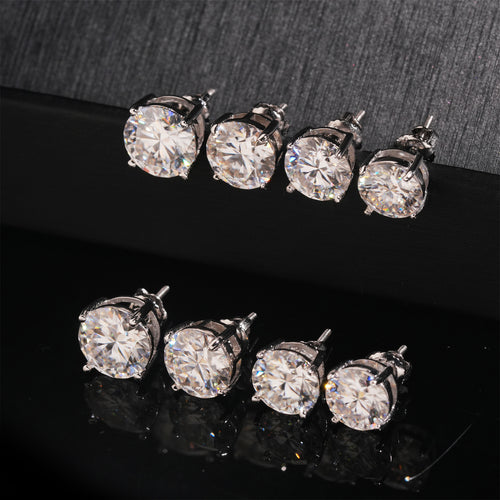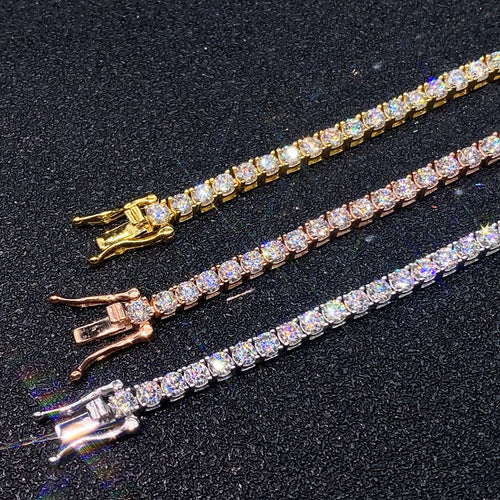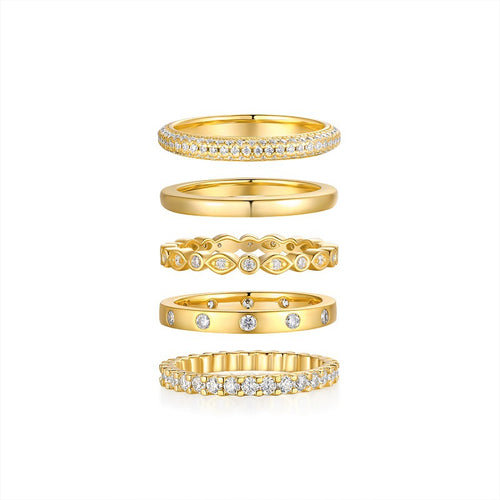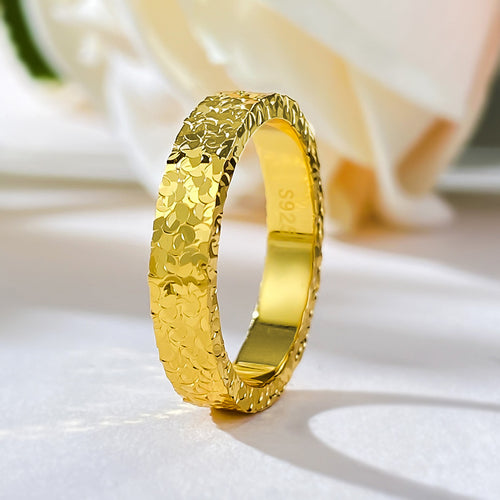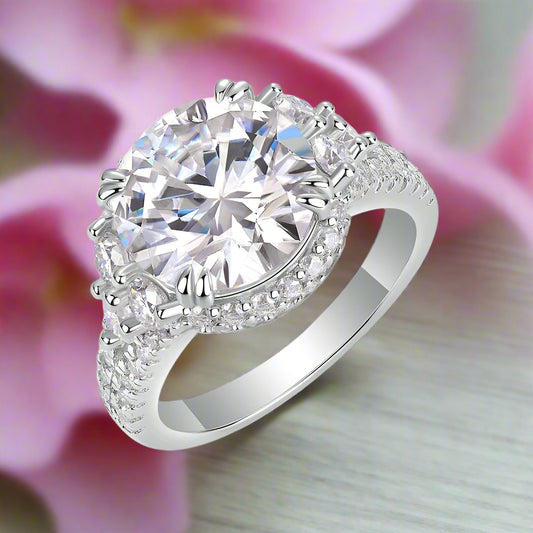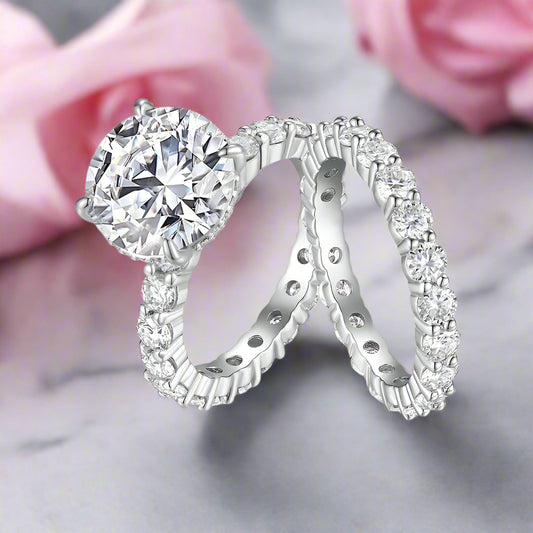When it comes to fine jewelry, few debates are as captivating as gold vs. rose gold. While classic yellow gold has symbolized wealth, power, and luxury for centuries, rose gold jewelry has surged in popularity for its soft, romantic, and modern appeal.
In this guide, we’ll explore everything you need to know about gold and rose gold - from their history, composition, durability, and pricing, to how each metal complements different skin tones. Whether you’re shopping for an engagement ring, bracelet, or luxury watch, understanding the differences will help you make the perfect choice.
A Brief History of Gold

Gold is one of the oldest precious metals known to mankind. For over 5,000 years, civilizations have treasured gold for its rarity, natural brilliance, and resistance to tarnish. It has been used in royal crowns, ancient coins, and timeless jewelry pieces.
-
Pure Gold (24K) is naturally soft and has a rich yellow tone.
-
To increase durability, gold is alloyed with metals like silver, copper, or palladium.
-
Different blends result in yellow gold, white gold, and rose gold.
Gold purity is measured in karats (K):
-
24K gold → 100% pure gold
-
22K gold → 91.6% pure gold
-
18K gold → 75% pure gold
-
14K gold → 58.5% pure gold
-
10K gold → 41.7% pure gold
What Is Rose Gold?

Rose gold is a modern classic - a blend of gold and copper that creates a warm pinkish hue.
-
Standard 18K rose gold: 75% gold + 25% copper
-
More copper → richer red tones (sometimes called red gold)
-
Less copper → softer blush pink
Rose gold’s durability and romantic charm make it a popular choice for engagement rings, wedding bands, and fashion jewelry. Its versatile tone complements a wide range of skin tones, adding both elegance and modernity.
Types of Gold: Yellow, White, and Rose

-
Yellow Gold – Traditional, luxurious, and timeless.
-
White Gold – Sleek, silvery appearance, often rhodium-plated for extra shine.
-
Rose Gold – Trendy, feminine, and vintage-inspired.
Each type of gold offers unique style benefits, meaning your choice comes down to personal preference, skin tone, and lifestyle.
Durability: Which Lasts Longer?
-
Yellow Gold – Pure gold is soft and prone to scratches, especially in higher karats like 22K or 24K. Lower karat gold alloys (14K, 18K) offer better durability.
-
Rose Gold – Copper makes rose gold tougher than pure yellow gold, making it more resistant to dents and everyday wear.
💡 Pro Tip: Rose gold may darken slightly over time due to copper content, but it can easily be restored with polishing.
Skin Tone Guide: Gold vs. Rose Gold

-
Yellow Gold – Best for warm skin tones with yellow or olive undertones. It enhances natural warmth and richness.
-
Rose Gold – Flatters both cool and warm undertones, making it more versatile. The blush-pink glow looks especially stunning on fair or rosy skin.
In short:
-
Warm skin → Yellow Gold shines best.
-
Cool or neutral skin → Rose Gold adds balance and softness.
Cost Comparison: Gold vs. Rose Gold

The cost of both metals depends on:
-
Gold purity (karat)
-
Alloy metals used (copper, silver, palladium, platinum, rhodium)
-
Market price of gold
💰 Gold is typically priced higher, while rose gold is slightly more affordable due to copper being less expensive than other alloying metals. However, luxury designer jewelry pieces in rose gold can still command premium pricing.
Jewelry Applications
Yellow Gold Jewelry

-
Classic engagement rings
-
Luxury watches
-
Traditional heirlooms
Rose Gold Jewelry

-
Romantic engagement and wedding rings
-
Trendy necklaces, bracelets, and earrings
-
Fashion-forward watches and accessories
Both metals blend beautifully with diamonds, gemstones, and other metals, allowing endless customization.
Lifestyle & Style Impact

-
Gold Jewelry: Symbol of tradition, heritage, and timeless elegance.
-
Rose Gold Jewelry: Modern, romantic, and perfect for fashion enthusiasts.
Choosing between them often comes down to personality:
-
Love classic luxury? Go for yellow gold.
-
Want something unique and contemporary? Choose rose gold.
Gold vs. Rose Gold: Side-by-Side Comparison
Feature Yellow Gold Jewelry 🌟 Rose Gold Jewelry 🌹 Color Warm, rich yellow hue Romantic pinkish-red tone History Ancient, timeless, and traditional Modern classic, surged in popularity in recent decades Composition Gold + silver/copper (varies by karat) Gold + copper (more copper = deeper pink) Durability Softer at higher karats (22K, 24K) Stronger due to copper alloy Tarnish Resistance Excellent (does not tarnish) May darken slightly over time due to copper Skin Tone Match Best for warm undertones (yellow/olive) Versatile – suits both warm and cool tones Cost Higher, depends on purity and alloys Slightly more affordable (copper is cheaper) Symbolism Luxury, wealth, heritage Romance, elegance, individuality Best For Classic heirloom jewelry, traditional engagement rings Trendy engagement rings, modern fashion jewelry, mixed-metal styles
FAQs on Gold vs. Rose Gold

Q: Is rose gold more expensive than yellow gold?
Not usually. Since copper is cheaper than gold, rose gold often costs slightly less - but design and brand influence price.
Q: Which is better for engagement rings: gold or rose gold?
Both are excellent. Gold offers a timeless look, while rose gold adds a romantic twist. It depends on your personal style.
Q: Does rose gold tarnish?
Rose gold doesn’t tarnish but may develop a patina over time due to copper. Regular cleaning restores its shine.
Q: Can I wear both gold and rose gold together?
Yes! Mixing metals is a modern jewelry trend that creates a chic, layered look.
Final Thoughts

Both gold and rose gold jewelry offer timeless elegance, but each tells a different story. Yellow gold speaks of tradition, heritage, and luxury, while rose gold embodies romance, individuality, and modern charm.
At the end of the day, the best choice is the one that reflects your personality, lifestyle, and style preferences.
Whether you fall for the classic radiance of gold or the blush-toned beauty of rose gold, both are enduring investments that will elevate your jewelry collection.


